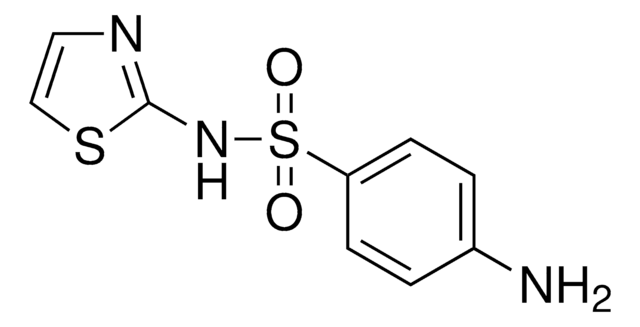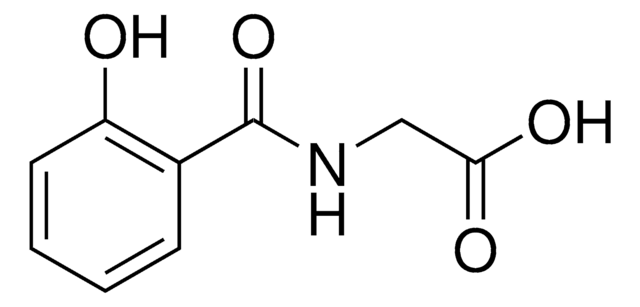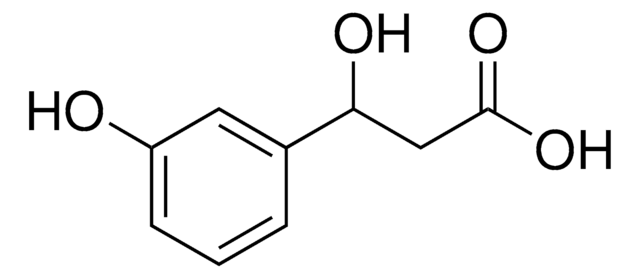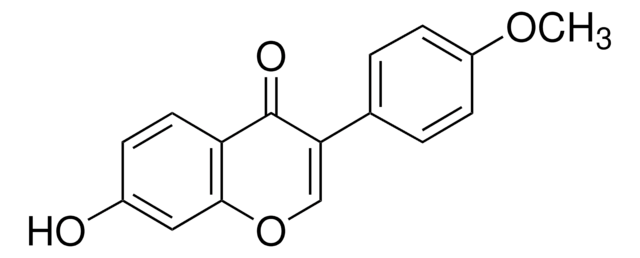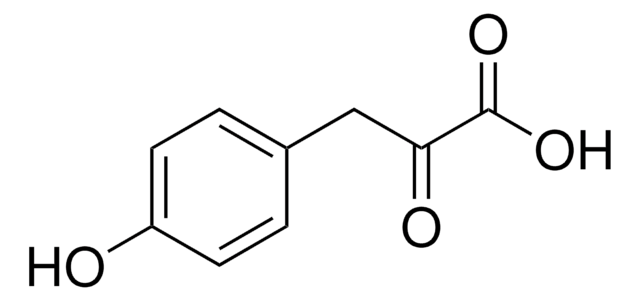추천 제품
Quality Level
분석
≥95% (NMR)
양식
solid
색상
white to pale yellow
저장 온도
2-8°C
SMILES string
OC(=O)CNC(=O)C1=CC=CC(O)=C1
InChI
1S/C9H9NO4/c11-7-3-1-2-6(4-7)9(14)10-5-8(12)13/h1-4,11H,5H2,(H,10,14)(H,12,13)
InChI key
XDOFWFNMYJRHEW-UHFFFAOYSA-N
일반 설명
3-Hydroxyhippuric acid is an acyl glycine. Acyl glycines are normally minor metabolites of fatty acids. However, the excretion of certain acyl glycines is increased in several inborn errors of metabolism. In certain cases the measurement of these metabolites in body fluids can be used to diagnose disorders associated with mitochondrial fatty acid beta-oxidation. Acyl glycines are produced through the action of glycine N-acyltransferase (EC 2.3.1.13) which is an enzyme that catalyzes the chemical reaction: acyl-CoA + glycine < -- > CoA + N-acylglycine. 3-Hydroxyhippuric acid is an organic acid found in normal human urine. 3-Hydroxyhippuric acid is a metabolite of rutin detected in urine after consumption of tomato juice (a source of rutin). 3-Hydroxyhippuric acid has its origin in dietary procyanidins (a major source of polyphenols consisting of elementary flavan-3-ol (epi)catechin units). 3-Hydroxyhippuric acid is a microbial aromatic acid metabolite derived from dietary polyphenols and flavonoids, found in normal human urine. It is a marker of gut Clostridium species. Higher levels are associated with higher levels of Clostridia.
애플리케이션
3-Hydroxyhippuric acid is a versatile molecule and it finds application in microbiome, biochemical and metabolomics research.
특징 및 장점
- Can be used in Metabolomics and Biochemical research
- High-quality compound suitable for multiple research applications
기타 정보
For additional information on our range of Biochemicals, please complete this form.
Storage Class Code
11 - Combustible Solids
WGK
WGK 3
Flash Point (°F)
Not applicable
Flash Point (°C)
Not applicable
가장 최신 버전 중 하나를 선택하세요:
Xiyue Xiong et al.
BioMed research international, 2016, 9485412-9485412 (2016-04-29)
Autism spectrum disorders (ASDs) are a group of mental illnesses highly correlated with gut microbiota. Recent studies have shown that some abnormal aromatic metabolites in autism patients are presumably derived from overgrown Clostridium species in gut, which may be used
Marie-Paule Gonthier et al.
Journal of chromatography. B, Analytical technologies in the biomedical and life sciences, 789(2), 247-255 (2003-05-14)
An HPLC-ESI-MS-MS method was developed to quantify in human urine fourteen aromatic acids known as metabolites of dietary polyphenols. These metabolites were determined simultaneously in a single 20-min chromatographic analysis with multiple reaction monitoring detection. The inter- and intra-day precisions
Marie-Paule Gonthier et al.
Free radical biology & medicine, 35(8), 837-844 (2003-10-15)
Procyanidins are major dietary polyphenols made of elementary flavan-3-ol (epi)catechin units. They have antioxidant properties and may contribute to health benefits in humans, but little is known about their metabolic fate. We compared here the metabolism of procyanidin dimer B3
Indu B Jaganath et al.
Free radical research, 40(10), 1035-1046 (2006-10-04)
Tomato juice containing rutin (quercetin-3-rutinoside) was ingested by healthy volunteers and ileostomists. Blood and urine collected over 24 h were analysed by HPLC with photodiode array (PDA) and tandem mass spectrometric detection. Low concentrations of isorhamnetin-3-glucuronide (Cmax = 4.3 +/-
Andreas R Rechner et al.
Free radical research, 36(11), 1229-1241 (2003-02-21)
Berry extracts rich in anthocyanins have been linked to protective effects including the modulation of age-related neurological dysfunction and the improvement of the resistance of red blood cells against oxidative stress in vitro. In this study the bioavailability, metabolism and
자사의 과학자팀은 생명 과학, 재료 과학, 화학 합성, 크로마토그래피, 분석 및 기타 많은 영역을 포함한 모든 과학 분야에 경험이 있습니다..
고객지원팀으로 연락바랍니다.